We've heard a lot about Dan Runzler this off-season as being a breakout player, and a key component to the Giants' already steady bullpen next season.
Granted, there is good reason for the hype surrounding Runzler. Last year, in his short September callup, he absolutely dominated. In 11 appearances, he posted a 1.04 ERA, a 1.27 WHIP and a K/9 rate of 11.42 (highest on the team).
Sure, he wasn't perfect. His FIP was high at 4.14, and his BB/9 rate and K/BB ratio left a little to be desired (5.19 and 2.20, respectively), but for the most part, Runzler has rightly deserved the hype going into spring training.
However, one young pitcher who could be just as interesting to watch next year, perhaps even more so than Runzler, might be Waldis Joaquin.
Now Joaquin isn't exactly an unknown. He was turning heads after his first Major League outing in Houston. That being said, with all the hype concerning Runzler, Joaquin has gone a little underneath the radar this off-season, and that shouldn't be the case for a guy who has the potential to be a solid contributor to the Giants' bullpen in 2010.
Granted, the kid is still a little raw. Joaquin is only 23 and has been playing ball "officially" for the Giants since 2005. Despite his youth and lack of experience though, he does offer a lot of upside for the Giants.
For starters, Joaquin throws some serious gas. Last season, Joaquin averaged the second fastest fastball on the Giants at 96.2 MPH (he followed only Brian Wilson by 0.4 MPH). Furthermore, he had a K/9 rate of 10.13, fifth highest on the team. And those strikeout numbers might not be a fluke either. Joaquin had a 14.40 K/9 rate and a 8.00 K/BB ratio in 10 IP with Fresno last season as well.
Joaquin still has plenty to work on going into spring training. He had a 5.91 BB/9 rate and a 1.71 K/BB ratio last season with the Giants, which are not exactly impressive numbers. And if that isn't enough, Joaquin's WHIP and FIP weren't particularly great either a 1.59 and 4.60.
Thus, Joaquin isn't exactly coming of an impressive cup of coffee stint in San Francisco if you look beyond his fastball velocity and strikeout rate. However, even though his 2009 stats may pale in comparison to a guy like Runzler, Joaquin did benefit (albeit, strangely) from a couple of factors that may work in his favor as he continues to develop in 2010:
1.) Joaquin suffered from an abnormally high BABIP at .332 in 2009.
Though Joaquin may be at risk to high BABIP numbers in the future because he induces a lot of groundballs (he had a 3.60 GB/FB ratio last season), chances are, it won't be that high again next season. In all likelihood, it will hover around the league average of .300.
2.) Joaquin has a solid variety of pitches.
In 2009, Joaquin threw three pitches with consistency: a fastball (which he threw 76.6 percent of the time), a slider (which he threw 13.7 percent of the time) and a changeup (which he threw 9.8 percent of the time). And if that isn't enough, Joaquin also had some value behind those pitches in 2009. Though his fastball wasn't as effective as it could have been (he had a -1.07 fastball runs above average per 100 pitches), his slider and changeup proved to be solid, though not spectacular, pitches (as evidenced by his 1.85 slider runs above average per 100 pitches and 0.59 changeup runs above average per 100 pitches).
Why is pitch variety and runs above average per 100 pitches important to look at in Joaquin's case? Well, Runzler really showed confidence in only TWO pitches last season: a fastball and slider (he threw the fastball 74.7 percent of the time and the slider 20.8 percent of the time). Granted, he does have a curve and change, but last season he only threw the pitches a combined 4.5 percent of the time.
So, Runzler had only two pitches last year. He must have been awesome with them, right? Well, not exactly. Though he had tremendous value behind his slider (he averaged 10.0 slider runs above average per 100 pitches), his fastball actually proved to be less valuable than Joaquin's at -1.39 fastball runs above average per 100 pitches.
(Also, for the record, Runzler put up a -3.51 curve ball runs above average per 100 pitches and -4.43 changeup runs above average per 100 pitches in 2009 as well. However, considering he threw the pitches so little, they were bound to have such little value).
Is Joaquin going to perform better than Runzler in 2010 for the Giants? I probably wouldn't bet on it. Runzler is a lot more polished than Joaquin with his control and command at this point.
(Then again, Runzler also had less time above Single-A than Joaquin, which makes one wonder if Runzler might need to develop a little more in Fresno or Connecticut to start off the year. Joaquin pitched in 44 games in Connectictut and Fresno in 2009, while Runzler only pitched in nine games in Double-A and Triple-A.)
Whatever happens with Runzler, this is certain with Joaquin: with Merkin Valdez and Justin Miller gone from the 2009 bullpen, a spot is open in the bullpen for Joaquin to contribute right away. And, even though his 2009 wasn't as impressive on paper as one would like to hope, Joaquin certainly has the tools to succeed in 2010.
With a 96-plus fastball and a three-pitch repertoire, Joaquin is more than capable of bursting onto the scene as a surprise stopper for the Giants.
Saturday, January 30, 2010
Can Waldis Joaquin Break Out for the Giants in 2010?
Labels:
2010,
Bullpen,
Dan Runzler,
Off-season,
San Francisco Giants,
Waldis Joaquin
Subscribe to:
Post Comments (Atom)




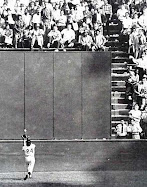
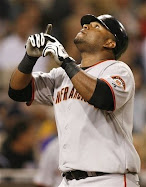
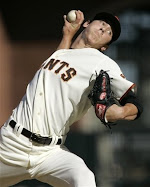
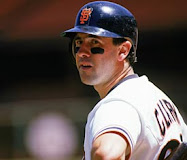
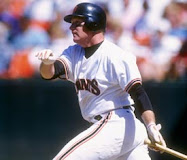
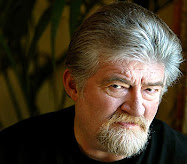

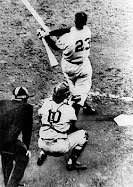
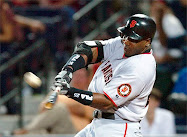
No comments:
Post a Comment